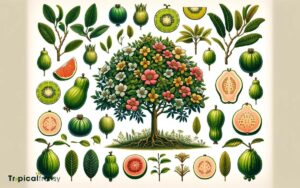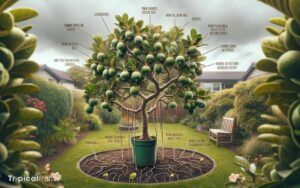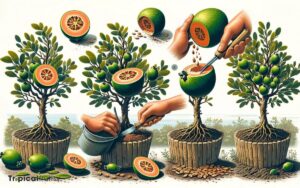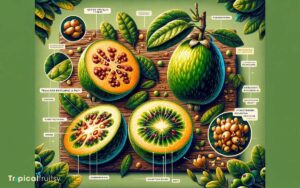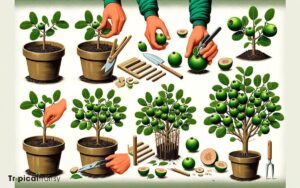What to Plant Under Feijoa Trees? Harmony Gardening!
For a thriving feijoa tree, consider companion planting with beneficial herbs, groundcovers, and flowering plants that improve soil, deter pests, and attract pollinators.
Ideal plants to grow under feijoa trees include chamomile, comfrey, clover, and certain flowering plants that bloom concurrently with feijoa flowers.
Companion planting under feijoa trees is a strategic approach to promote a healthier garden ecosystem.
Here’s why these plants are advantageous:
Selecting the right underplanting creates a healthy, mutually beneficial environment, elevating the vitality and yield of your feijoa trees.
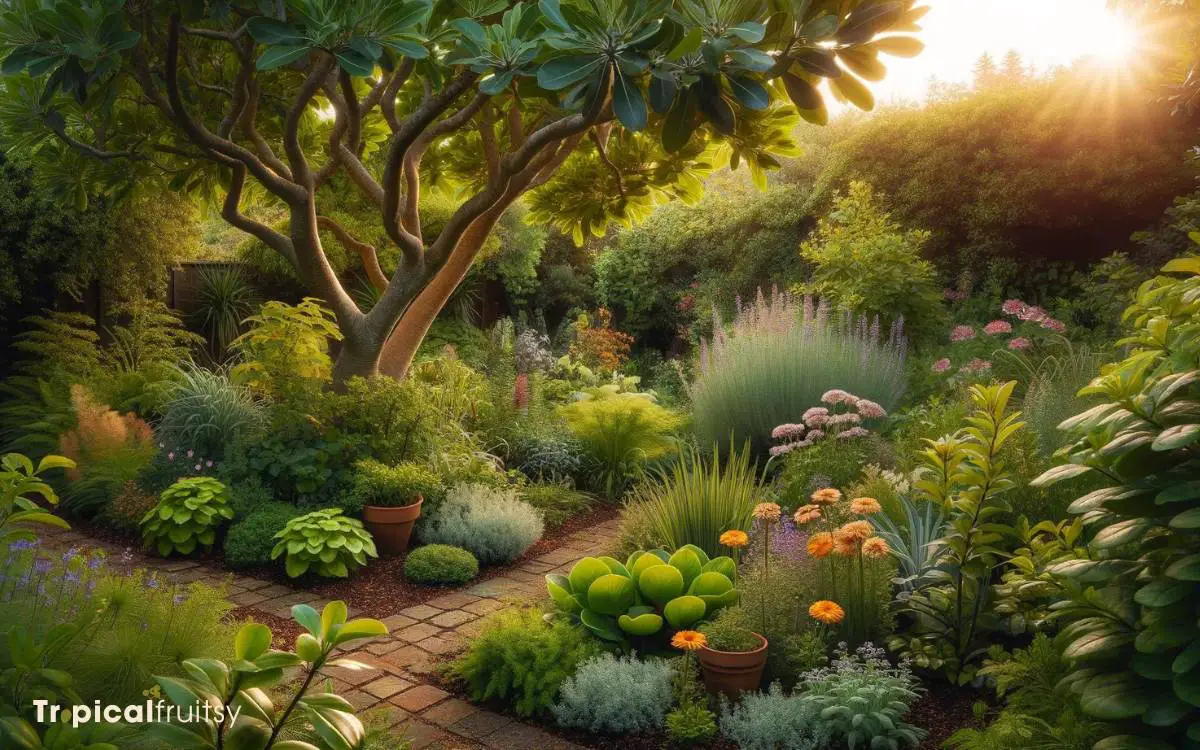
Key Takeaway
Best Companion Plants for Under Feijoa Trees
| Plant Type | Examples | Benefits |
|---|---|---|
| Herbs | Chamomile, Comfrey | Attract beneficial insects, improve soil nutrients |
| Groundcovers | Clover | Fix nitrogen, enhance soil fertility |
| Flowering Plants | Plants with concurrent blooming | Increase pollinators, boost fruit set |
Understanding Companion Planting
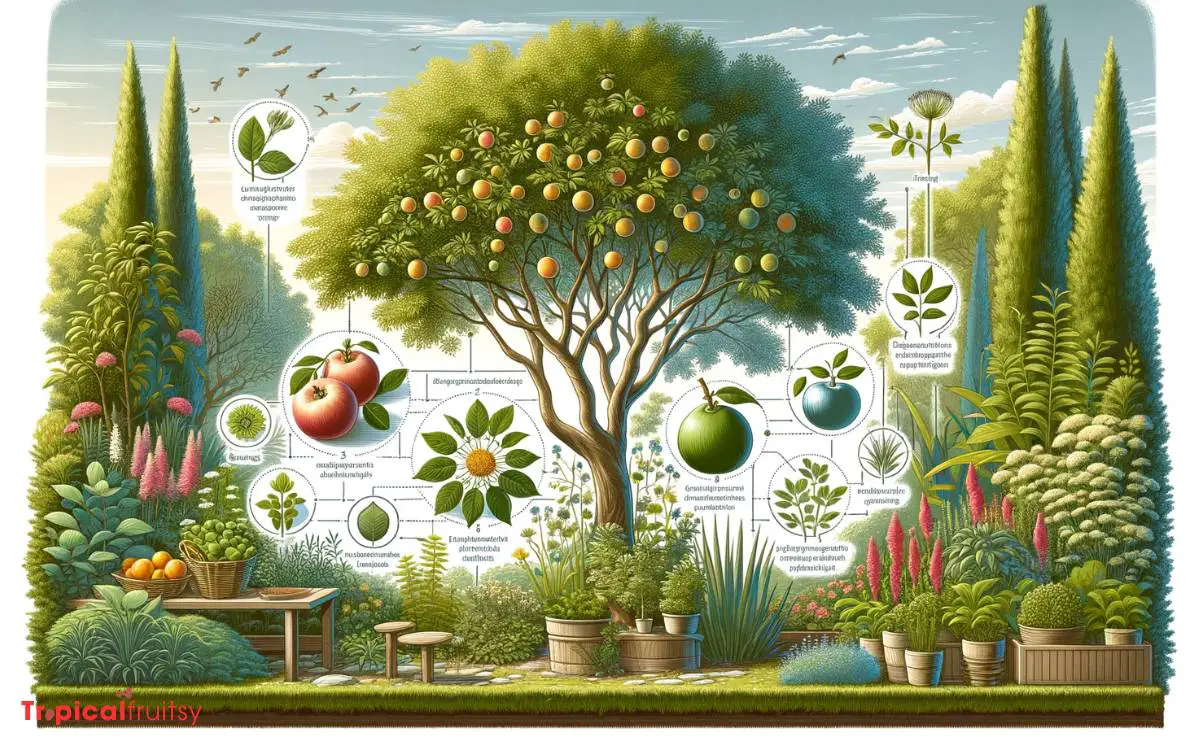
Companion planting, the strategy of positioning plants in close proximity for mutual benefit, can enhance the health and yield of feijoa trees.
It’s grounded in ecological insights that certain plant combinations can deter pests, improve soil fertility, and foster pollination. This approach isn’t just folklore; it’s backed by agronomic research.
For feijoa trees, identifying the right companions involves understanding their specific needs and interactions with other plants.
Effective companion plants for feijoa may include legumes, which fix nitrogen in the soil, thus feeding the trees. Marigolds can repel nematodes and other pests, while flowering herbs attract beneficial pollinators.
It’s not about simply placing plants together; it’s a deliberate design that mimics natural ecosystems, yielding a thriving, sustainable garden.
Herbs and Groundcovers Choices
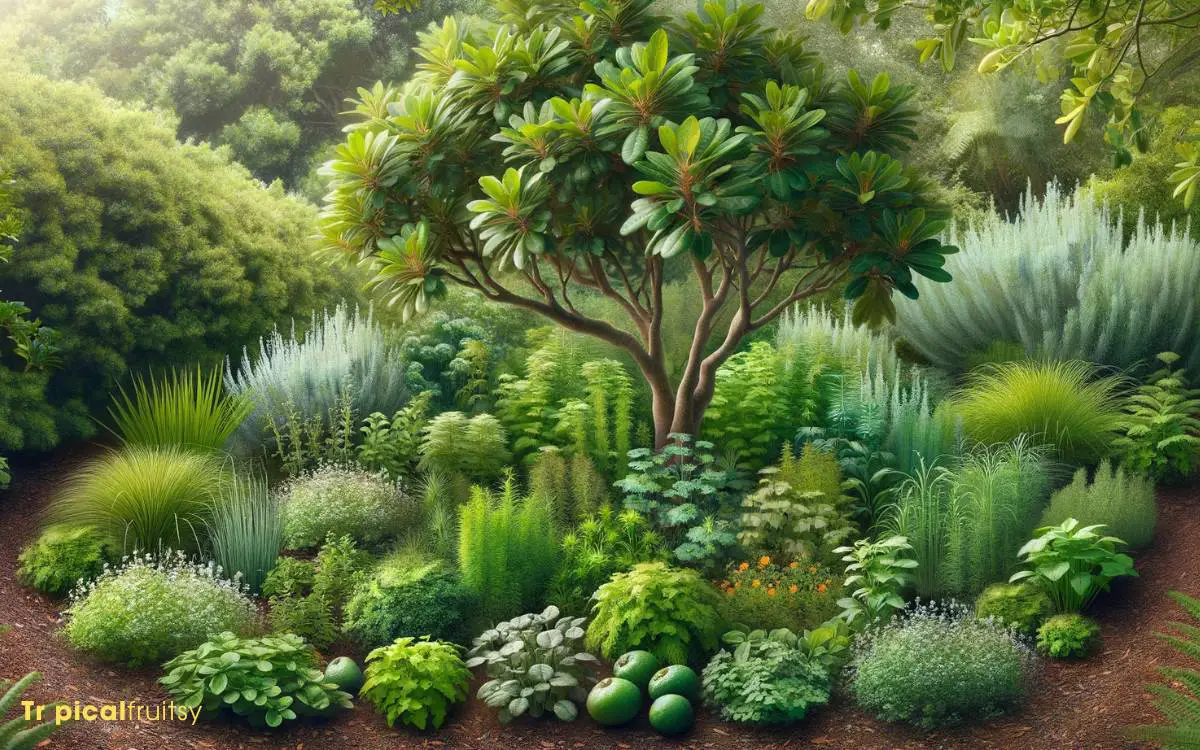
Several herbs and groundcovers can serve as excellent companions to feijoa trees, optimizing the understory environment and promoting a healthy orchard ecosystem.
These plants can enhance soil quality, suppress weeds, and attract beneficial insects. When selecting companions, it’s essential to consider their compatibility with the feijoa’s growth habits and soil requirements.
Here are suitable options:
- Chamomile: Attracts pollinators and beneficial insects.
- Thyme: Offers ground cover and deters pests with its scent.
- Clover: Fixes nitrogen in the soil, enriching it for feijoas.
- Lemon balm: Repels unwanted insects while inviting pollinators.
- Alfalfa: Deep roots break up the soil, improving water infiltration.
Each of these plants brings specific benefits that support the feijoa trees, creating a dynamic, interdependent plant community.
Flowering Plants for Pollination

Incorporating pollinator-friendly flowering plants under feijoa trees can significantly enhance fruit set by attracting a diverse array of bees and insects necessary for pollination.
Selecting flowers that bloom at the same time as feijoas ensures that pollinators are present when needed most.
For example, lavender and borage not only attract bees with their nectar-rich flowers but also thrive in similar soil conditions as feijoas.
Marigolds can deter pests while providing a pollen source. It’s essential that these companion plants don’t compete aggressively for nutrients or space, to avoid hindering the feijoa’s growth.
Thoughtful placement of such flowering plants forms a synergistic relationship, bolstering the ecosystem.
This strategic approach to planting complements the next critical aspect: understanding the role of mulching in maintaining feijoa health.
Mulching and Feijoa Health

Mulching significantly enhances the health of feijoa trees by retaining soil moisture and suppressing weed growth.
When applied correctly, mulch creates a favorable environment for feijoa trees, leading to robust growth and fruitful harvests.
Using organic materials such as straw, bark, or composted leaves can provide additional benefits beyond moisture retention and weed control.
Here are key considerations for mulching around feijoa trees:
- Apply a 2-4 inch layer of mulch, avoiding direct contact with the tree trunk.
- Replenish mulch annually to maintain its effectiveness.
- Ensure mulch is free of seeds and pathogens to prevent disease.
- Choose mulch that complements the soil’s pH and nutrient profile.
- Consider using mulch that breaks down over time to enrich the soil.
Edible Companions and Permaculture
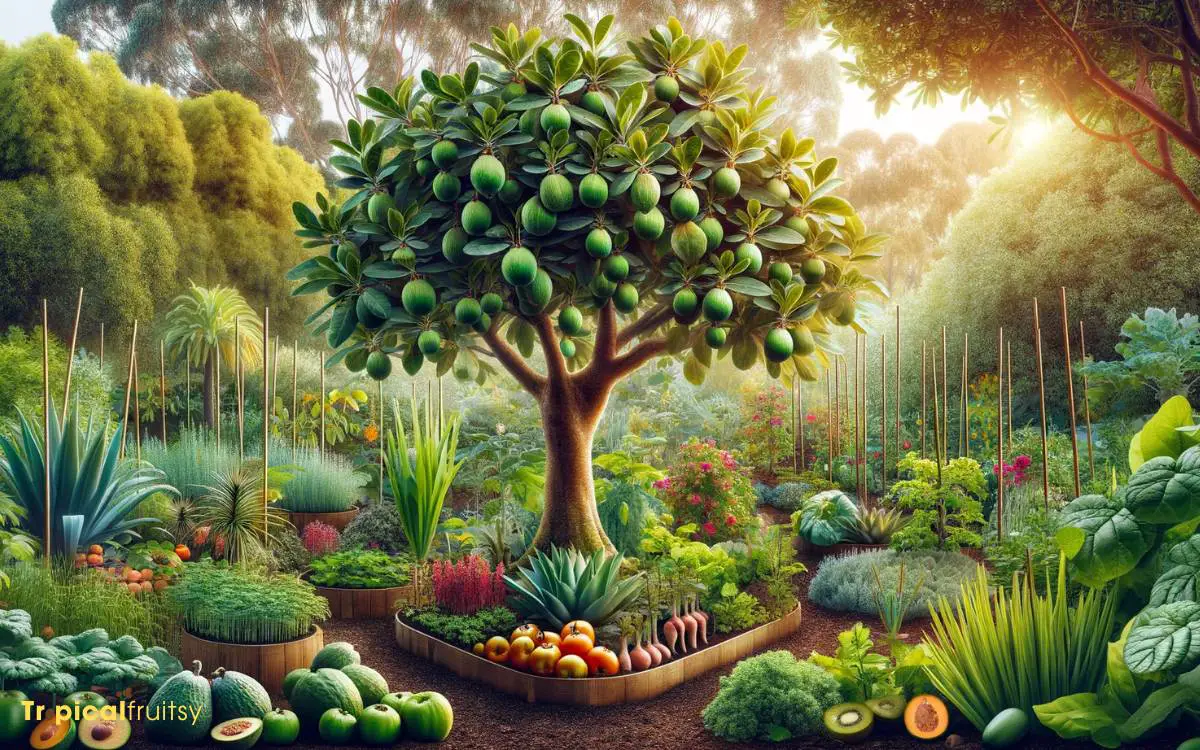
Why not enhance your feijoa tree’s environment with edible companion plants that thrive in permaculture systems?
These systems mimic natural ecosystems, focusing on sustainable and self-sufficient agricultural methods. By incorporating companion planting, gardeners create a diverse, interdependent environment that benefits all components.
Selecting companions for feijoa trees involves considering factors like root competition, nutrient uptake, and shade tolerance.
Leafy greens, such as lettuce and spinach, are excellent choices as they can flourish in the dappled light beneath the feijoa canopy. They also have shallow roots, minimizing competition for nutrients and water.
Herbs like chives or oregano not only thrive in similar conditions but also repel pests, enhancing the feijoa’s growth while providing additional culinary benefits.
These edible companions contribute to a holistic permaculture design, promoting a thriving, biodiverse garden.
Conclusion
In the garden’s symphony, companion planting under feijoa trees hits a harmonious note. Interspersing herbs and groundcovers fosters a vibrant ecosystem, while flowering plants serenade pollinators.
A mulch blanket ensures the tree’s vitality, creating a cradle for health. Integrating edible companions weaves a tapestry of permaculture, yielding a cornucopia beneath feijoa’s boughs.
Thus, gardeners orchestrate a sustainable and productive ensemble, striking a balance between nature’s bounty and botanical science.


